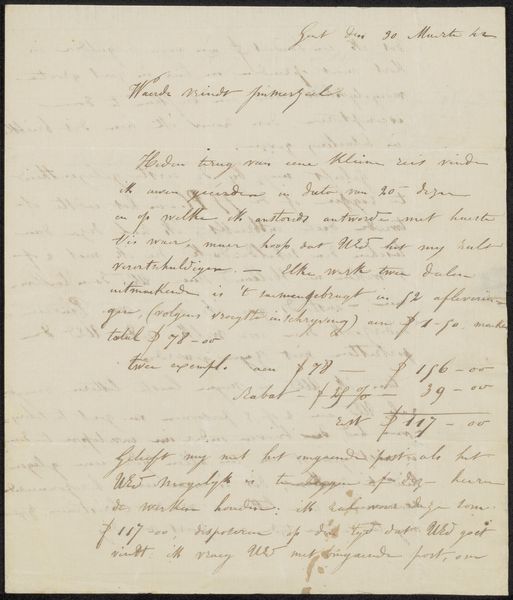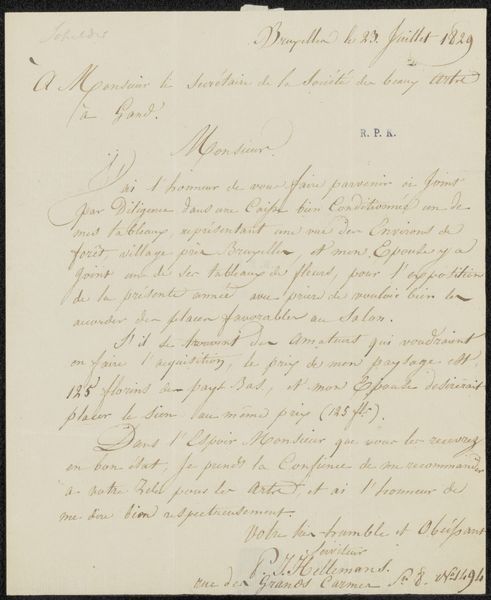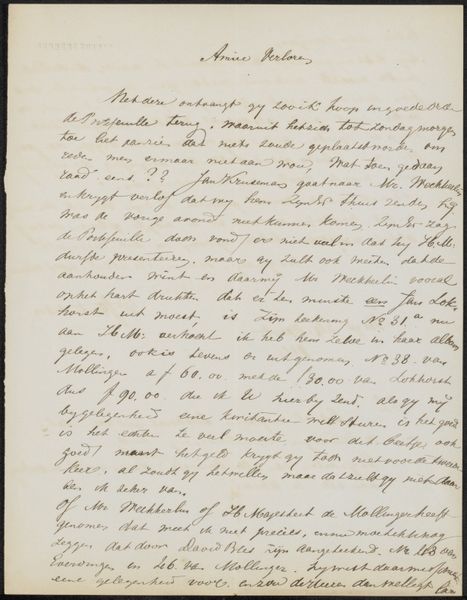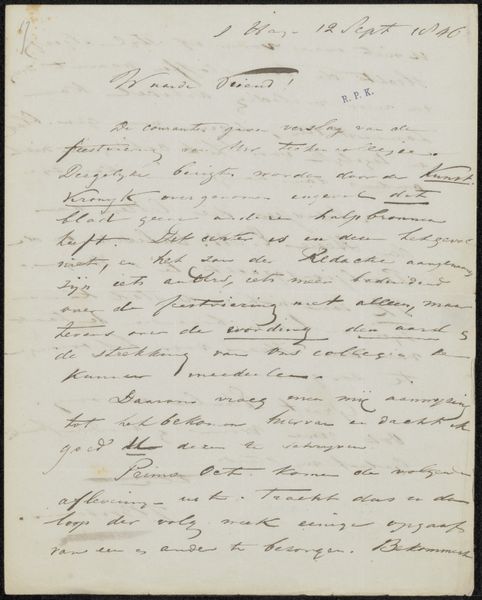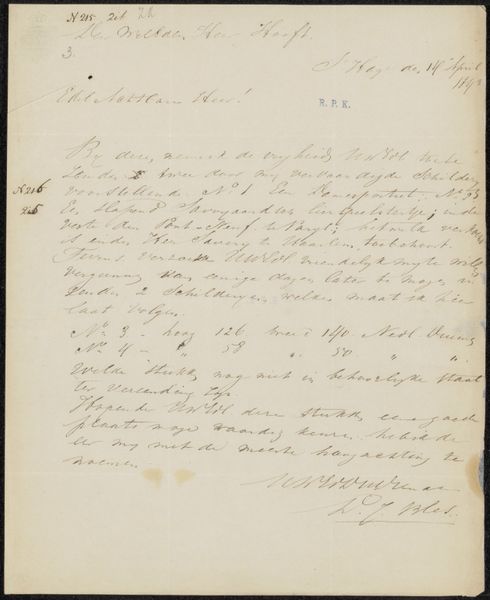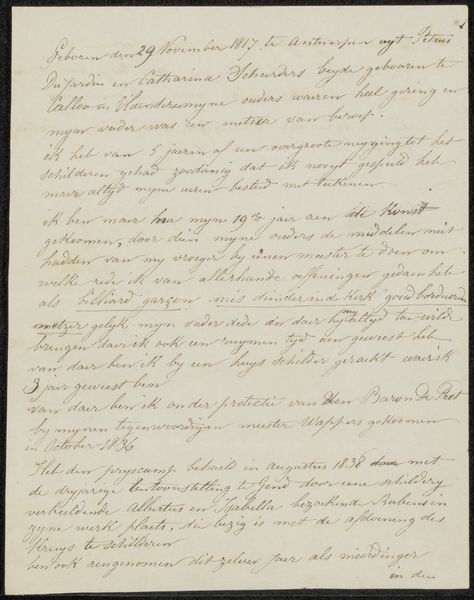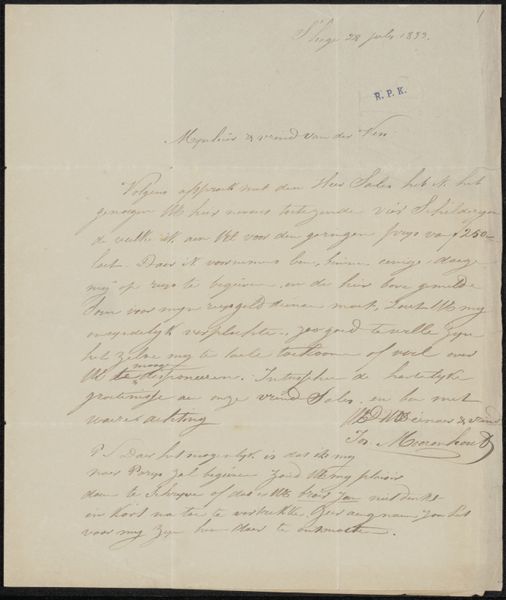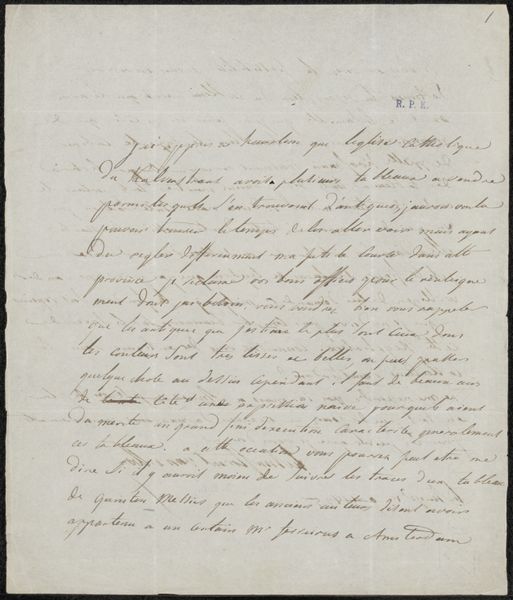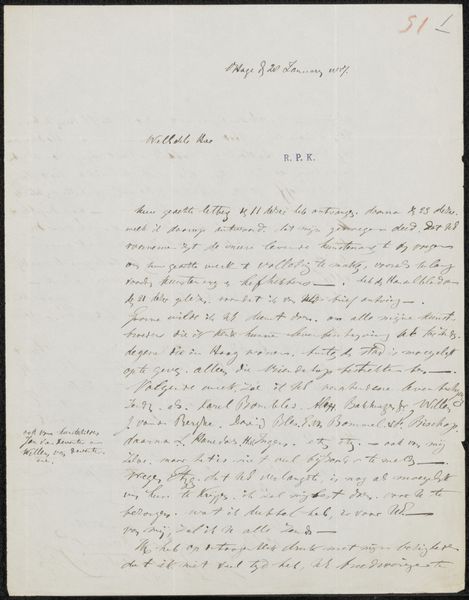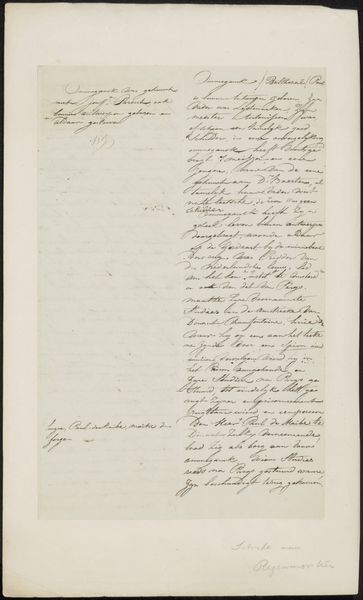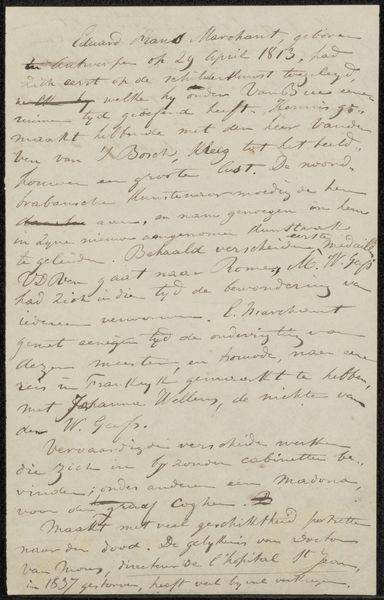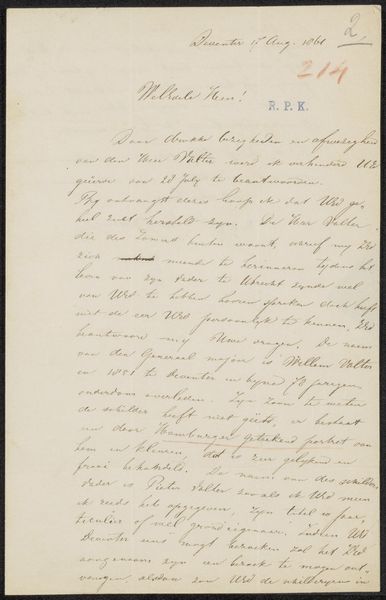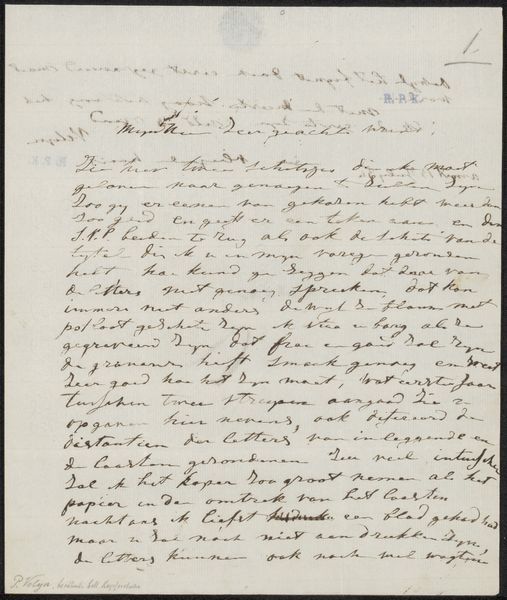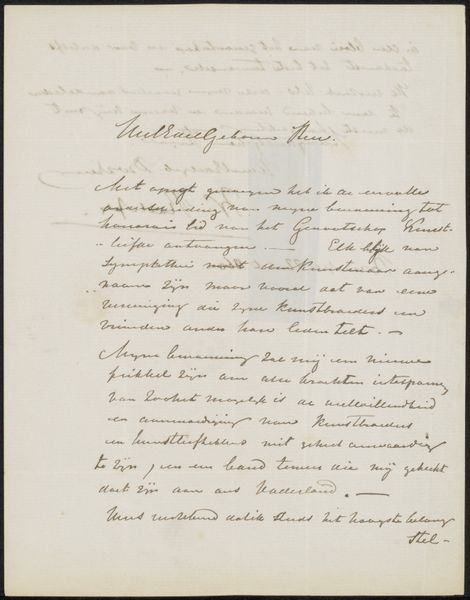
Brief aan de Commissie van de Tentoonstelling van Levende Meesters in Utrecht Possibly 1848
0:00
0:00
drawing, paper, ink
#
drawing
#
dutch-golden-age
#
paper
#
ink
#
calligraphy
Copyright: Rijks Museum: Open Domain
Editor: Here we have "Brief aan de Commissie van de Tentoonstelling van Levende Meesters in Utrecht," or "Letter to the Commission of the Exhibition of Living Masters in Utrecht," possibly from 1848, by Adrianus Petrus Hendrikus Wilbers. It's an ink drawing on paper, exhibiting the neatness of calligraphy. I am immediately struck by the formal tone of this letter and how it feels like peering into a historical moment. How do you interpret this piece as a historian? Curator: This work offers a glimpse into the art world of the 19th century, revealing the importance of exhibition commissions. These exhibitions significantly shaped an artist's career. A letter such as this becomes evidence of the institutional structures and hierarchies of the art world at that time. Editor: So, the letter itself provides historical context? Curator: Precisely. We must also consider who Wilbers was writing to and why. What was at stake for him? Was it social acceptance, sales, critical acclaim, or something else entirely? This piece prompts us to think about the networks and systems artists navigated, highlighting the societal mechanisms at play. The formal script suggests an intended public role for the content, an attempt to participate in and perhaps influence the artistic establishment. It’s political, even in its refinement. Editor: It's interesting to think about a piece of correspondence as being intentionally created to be part of something bigger. I initially just saw it as a neat, formal note. Now I see so much more. Thanks for opening my eyes. Curator: It reveals how art extends beyond the canvas, informing all manner of social practice. Thinking critically about art is also about uncovering and contextualizing its meaning to see its role in historical events.
Comments
No comments
Be the first to comment and join the conversation on the ultimate creative platform.
